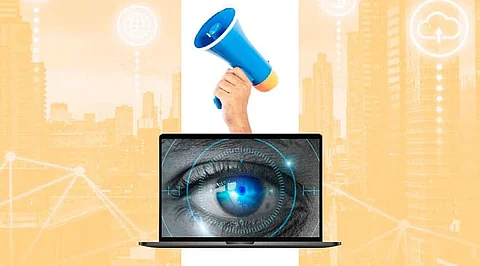
- InsightsInsights
- CryptocurrenciesCryptocurrencies
- Stocks
- White Papers
- IndustryIndustry
- GeographyGeography


Computer vision has advanced in great strides, allowing new marketing opportunities. The system scans photos and properly identifies items and elements within them using AI and ML.
Digital systems can recognize and make sense of the information within images using computer vision, analogous to how humans view and interpret the world around them using their eyes and minds. On social media, you've probably already dealt with many aspects of computer vision. In a broader sense, computer vision algorithms may deconstruct and transform visual content into metadata, which can subsequently be stored, categorized, and analyzed in the same way as any other dataset.
How is Computer Vision Used in Marketing?
Generally, eCommerce merchandising has been all about tagging. Each product includes several tags, allowing customers to filter for specific characteristics while also allowing recommendation engines to uncover similar products.
If an online shop wants to highlight a particularly significant product, they can override the algorithms.
Nevertheless, AI-based software like Sentient Aware now enables visual product discovery, which eliminates the requirement for most metadata and surfaces related products solely on their visual affinity. This means that instead of utilizing a traditional filtering method, customers can pick a product they like and be presented with visually related products.
Retargeting can be done with the same technology that is used for merchandising. Retargeting website traffic with display ads for a particular product (possibly after cart abandonment) can be beneficial, but it's also a brutal strategy.
Retailers may be confused if a buyer has already purchased a specific product offline, thus dynamic creativity that shows a range of seemingly comparable products may have more effectiveness.
Pinterest has only recently released a feature called Lens, which works similarly to Shazam but is focused on visual content. This allows customers to point their camera phone at a thing and then run a Pinterest search to find that product or related content.
This may be used to locate a supplier for a certain piece of furniture or a recipe for an unusual unknown veggie.
Since 2015, the social media platform has had a degree of visual search functionality that allows users to select a portion of an image and search for relevant things, but Lens has pushed this even further by allowing brands to highlight products found within photos.
Brands are primarily looking for mentions of their products and services on the internet. However, writing is only a small percentage of what people post on social media; photos and videos are perhaps just as significant.
There are already firms (such as Ditto or gum) that provide social listening services that can detect the use of company logos, assisting community managers in identifying positive and negative feedback.
In December 2016, Amazon Go made the news. Users enter the store by scanning a barcode on their Amazon Go application at a gate.
The user is then tracked around the store using computer vision technology (probably in conjunction with some type of phone monitoring, though Amazon has not provided further details), and sensors on the shelf detect when the consumer chooses a product.
You just walk out the door once you've got everything you need, with the Go app tracking what you've brought with you. Amazon's Seattle concept shop appears to have cleared the way for machine vision to play a part in alleviating the pain of checkout.
Density is a start-up that uses a small piece of gear that can monitor movement through doorways to discreetly track people's movements as they walk around work environments.
This data can be used for a variety of purposes, like measuring how busy a shop is or how lengthy a line / wait time is.
Computerized footfall counters have existed for some time, but developments in computer vision have made people tracking smart enough to be employed in merchandising optimization.
MediaCom stated in January 2016 that it would use Realeyes' facial identification and analytics technologies in content testing and media relations.
The technology captures consumers' reactions to adverts and information utilizing remote panels of people and their existing webcams.
Emotional intelligence is "quicker and cheaper" than typical internet surveys or focus groups, according to Realeyes Founder Mikhel Jaatma, and obtains direct replies rather than relying on subjective or assumed opinions.
As computer vision develops, it will be possible to use it to execute automated image labeling. This could potentially eliminate the need for manual and inconsistent labeling, allowing for faster and more accurate picture organization on a broad scale.
When used to video, the amount of data available will ultimately be mind-boggling, and how we acquire and preserve imagery may shift dramatically.
But it is still a way off, many people are already familiar with the capability of picture search in Google Photos, which has been trained to identify thousands of objects, as well as reverse image searches in Google's search results or in a stock photo library.
Augmented reality is rapidly being considered a possible next stage for mobile computing, from Snapchat Lenses to as-yet economically unproven technology incorporating headsets like the Hololens.
While computer vision systems still have a long way to go in order of precision, dependability, acceptance, and possible privacy problems, the progress they've made in recent years is impressive enough to attract marketers' attention. Marketers can utilize this technology to investigate the benefits and diverse use cases outlined above, as well as much more. We should expect many new and fascinating creative applications of computer vision to emerge as technology advances and society's dependence on visual communication grows.
